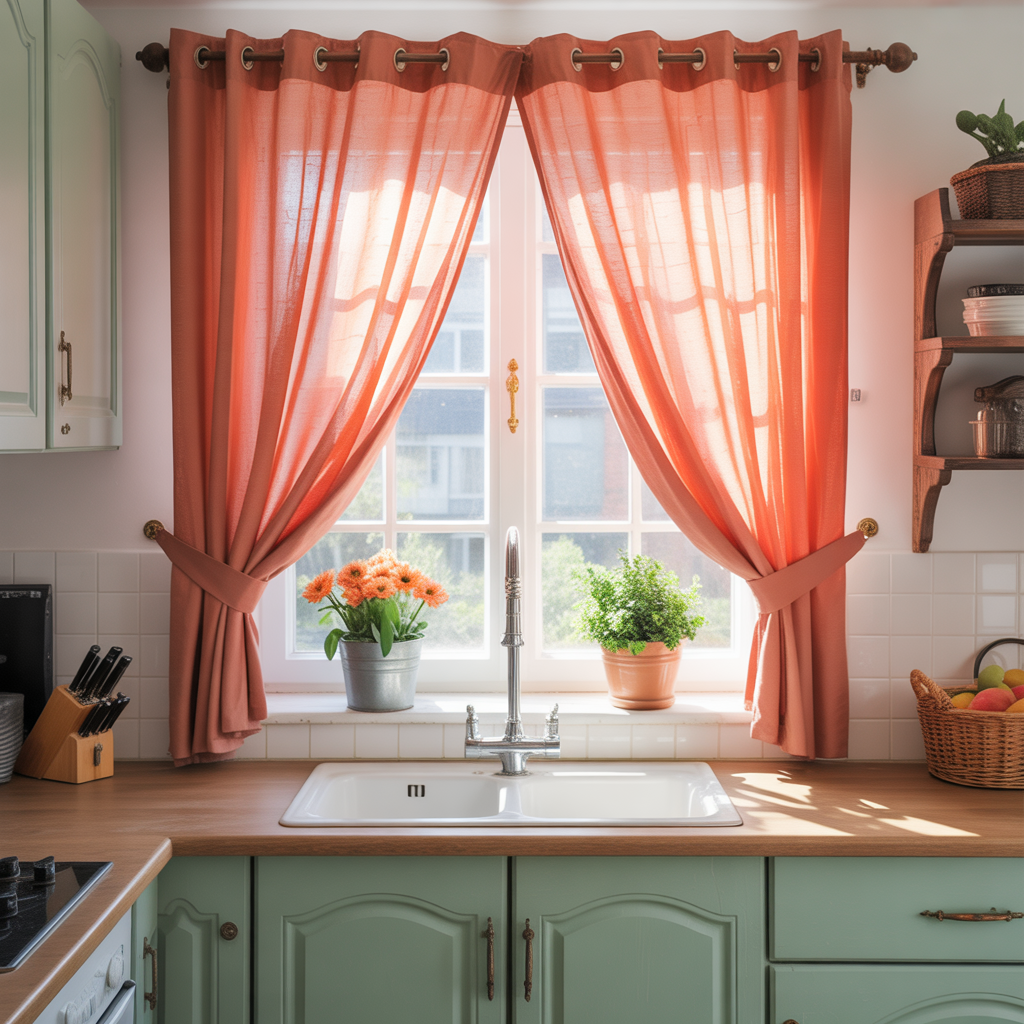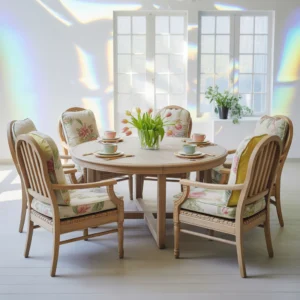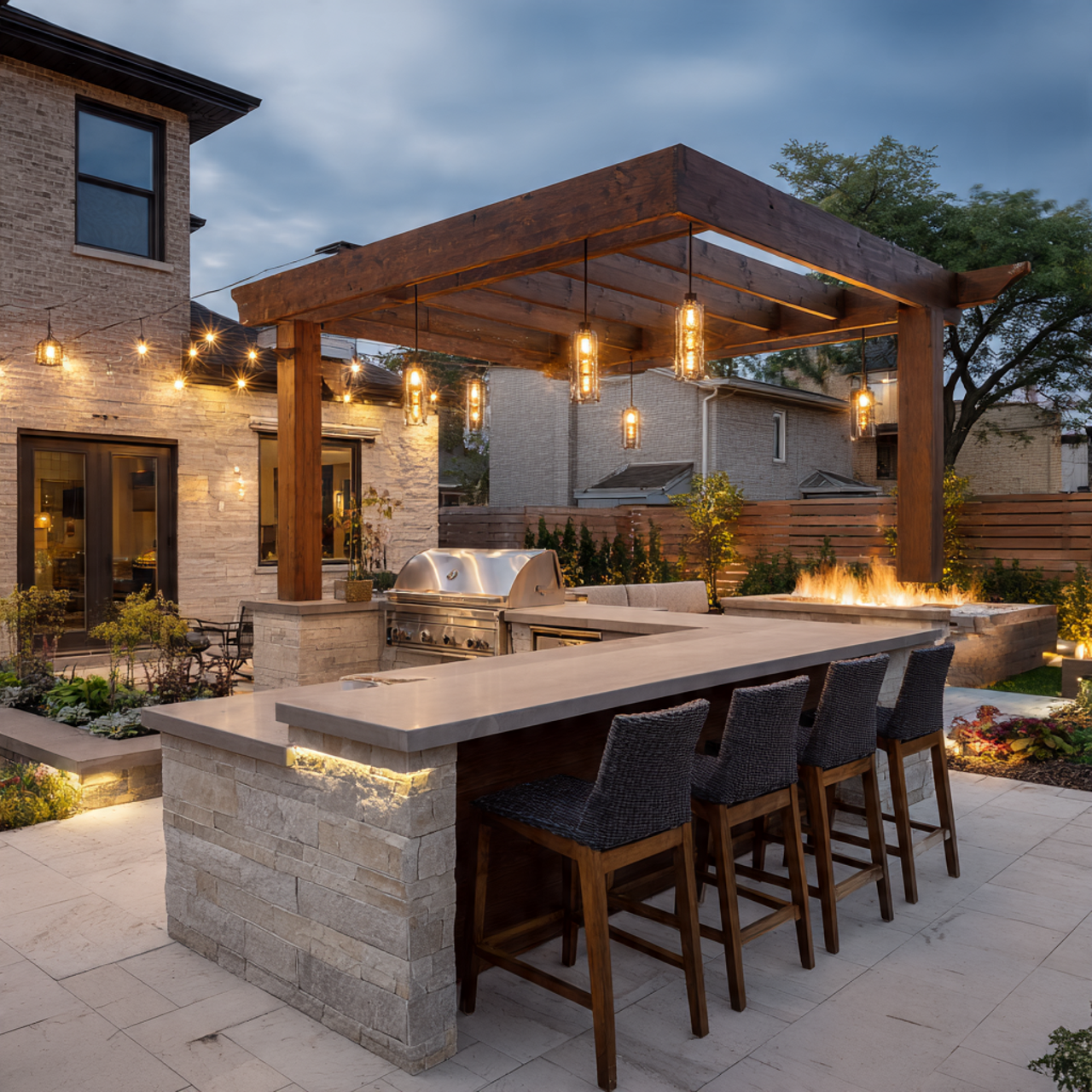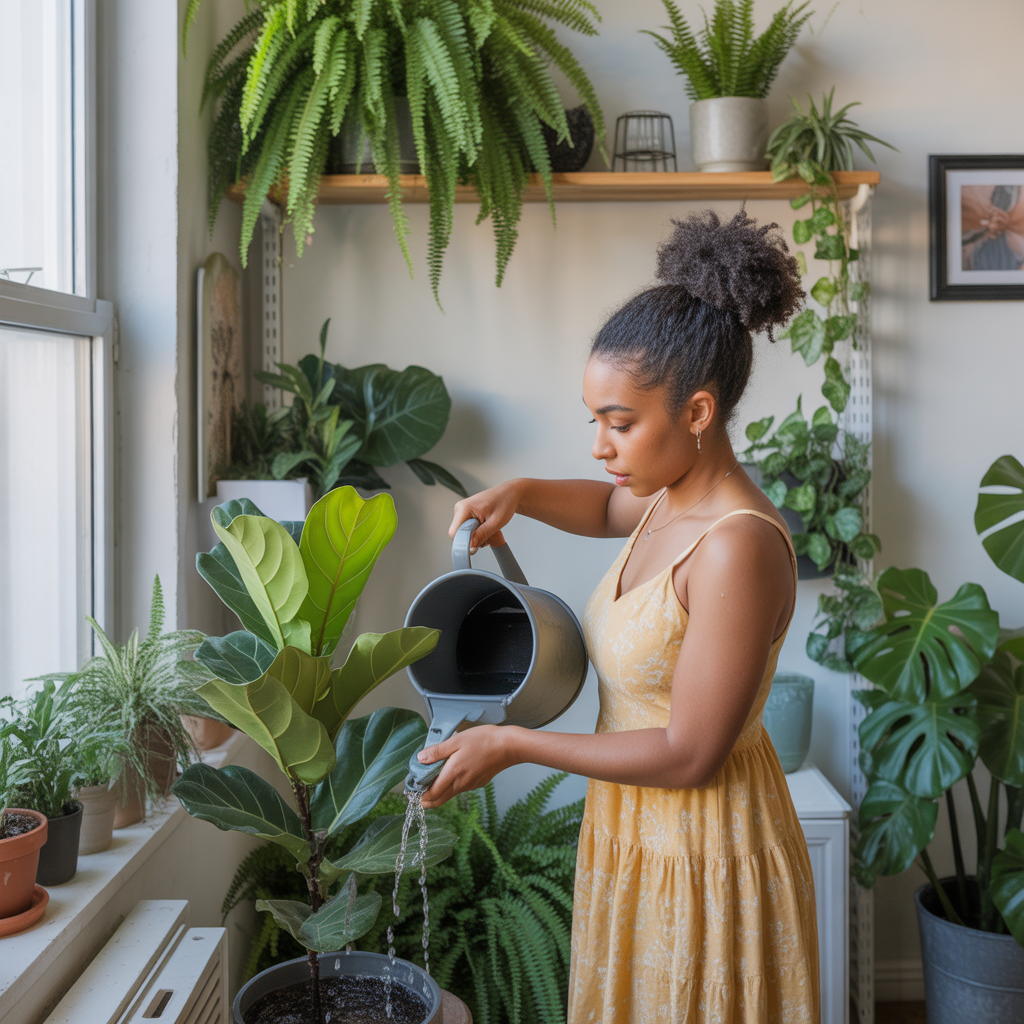21 Outstanding Cozy Music Room Ideas for Comfort and Creativity
A music room is more than just a place to practice scales or store instruments. When designed with comfort and warmth in mind, it becomes a retreat for creativity, relaxation, and connection. A cozy music room blends ambiance, acoustics, and personal touches to create an environment where melodies can flourish. Whether you’re a professional musician, a hobbyist, or simply someone who loves to listen to records, having a dedicated space makes music feel even more special.
The charm of a cozy music room lies in its versatility. It can be a snug corner in a living room, a repurposed attic, or a fully dedicated studio space. The key is in combining warmth with functionality—soft lighting, comfortable furniture, and design details that speak to your taste. Below are 21 thoughtful ideas to transform your space into the ultimate cozy music room.
Warm Lighting for Atmosphere
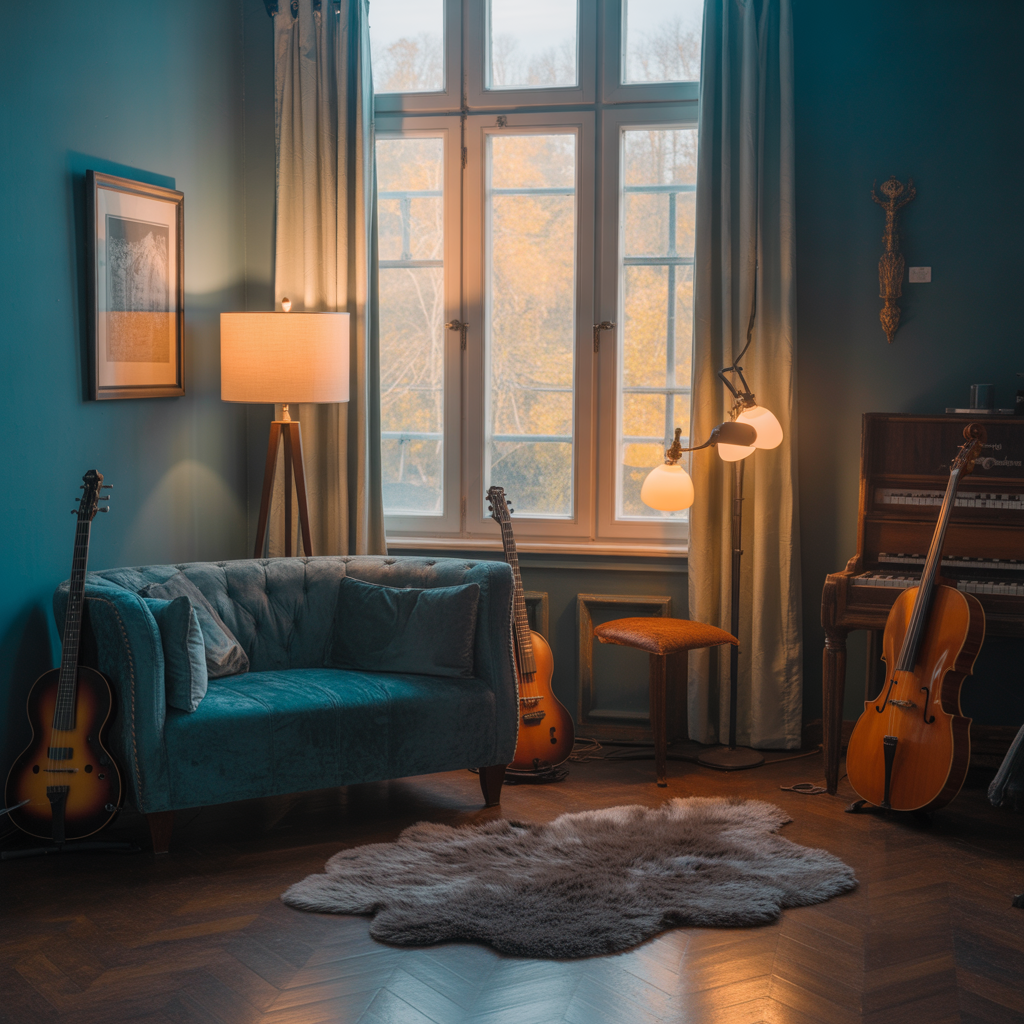
Soft, layered lighting sets the tone for a music room. Floor lamps with warm-toned bulbs, fairy lights draped across shelves, or even candles on side tables can create a relaxing ambiance that encourages creativity. Unlike harsh overhead lighting, these options bring intimacy and warmth, making practice sessions or listening hours feel more inviting.
Adding dimmer switches can also help you control the mood. Bright light might be best for reading sheet music or practicing technique, while softer lighting works beautifully for quiet listening sessions. The glow of warm light can make even a small music room feel enveloping and inspiring.
Comfortable Seating
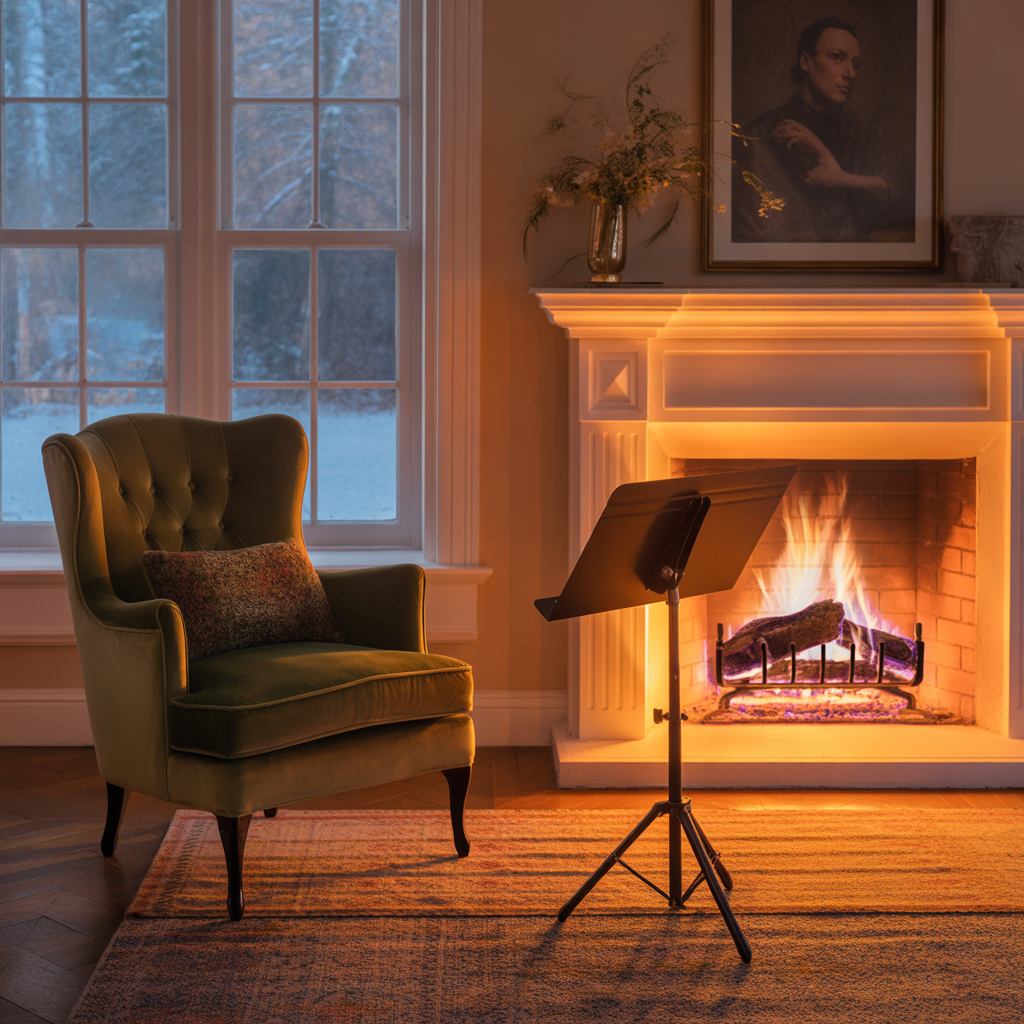
A cozy music room isn’t complete without a spot to sink into. Plush armchairs, overstuffed couches, or beanbags create spaces where you can relax with your instrument or simply enjoy listening. Comfort matters because music often demands long hours of practice or deep listening, and having supportive seating makes the experience more enjoyable.
If you’re designing for a smaller space, consider multipurpose seating like storage ottomans or benches with cushions. These pieces provide comfort while also helping you keep the room tidy, storing sheet music, cables, or small instruments out of sight.
Acoustic-Friendly Layout
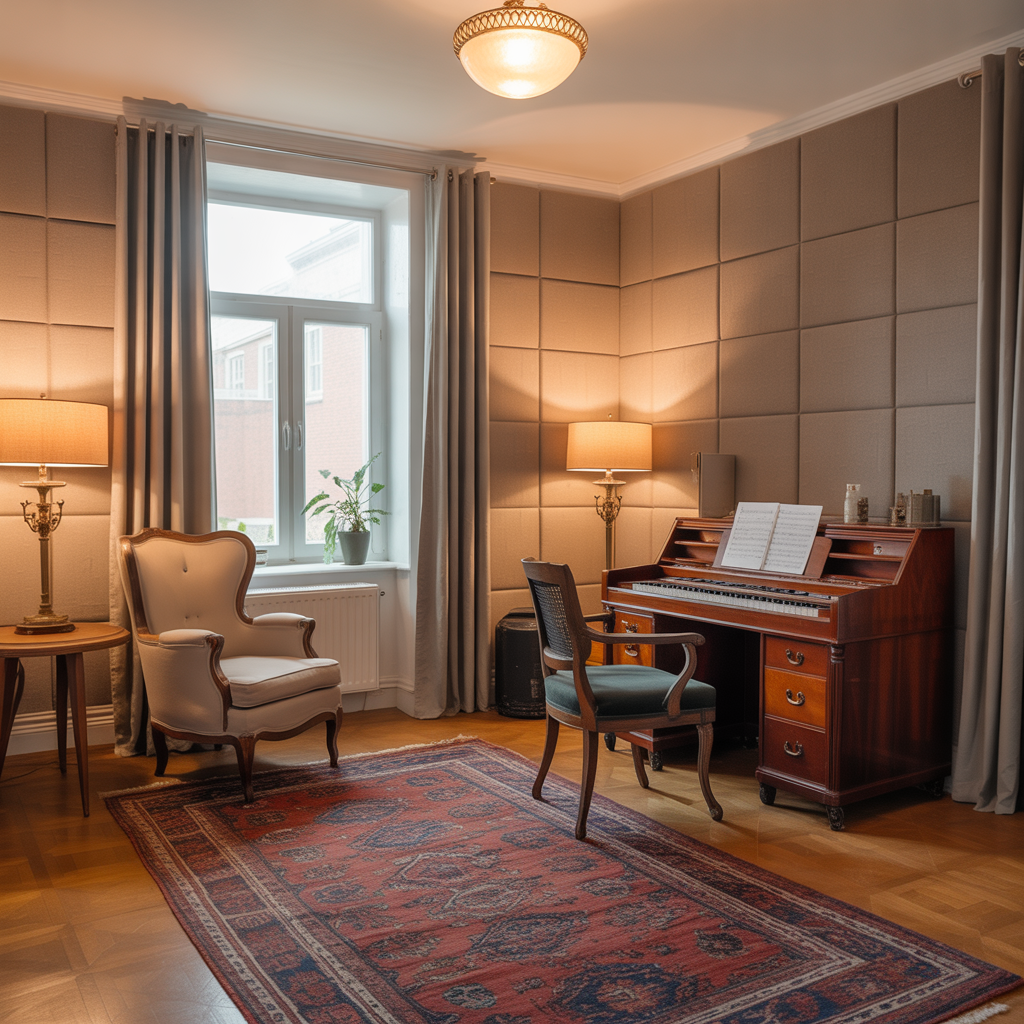
The way furniture is arranged can affect how sound travels in your room. Avoid cramming instruments against hard walls; instead, experiment with angling pieces or using area rugs and curtains to soften echoes. A well-thought-out layout ensures both practice and listening experiences feel balanced.
Acoustics don’t always require expensive panels. Simply layering textiles—rugs, throws, and curtains—can improve the sound. For musicians, this creates a space where instruments resonate naturally without sounding too sharp or flat.
Rugs for Warmth and Sound Control
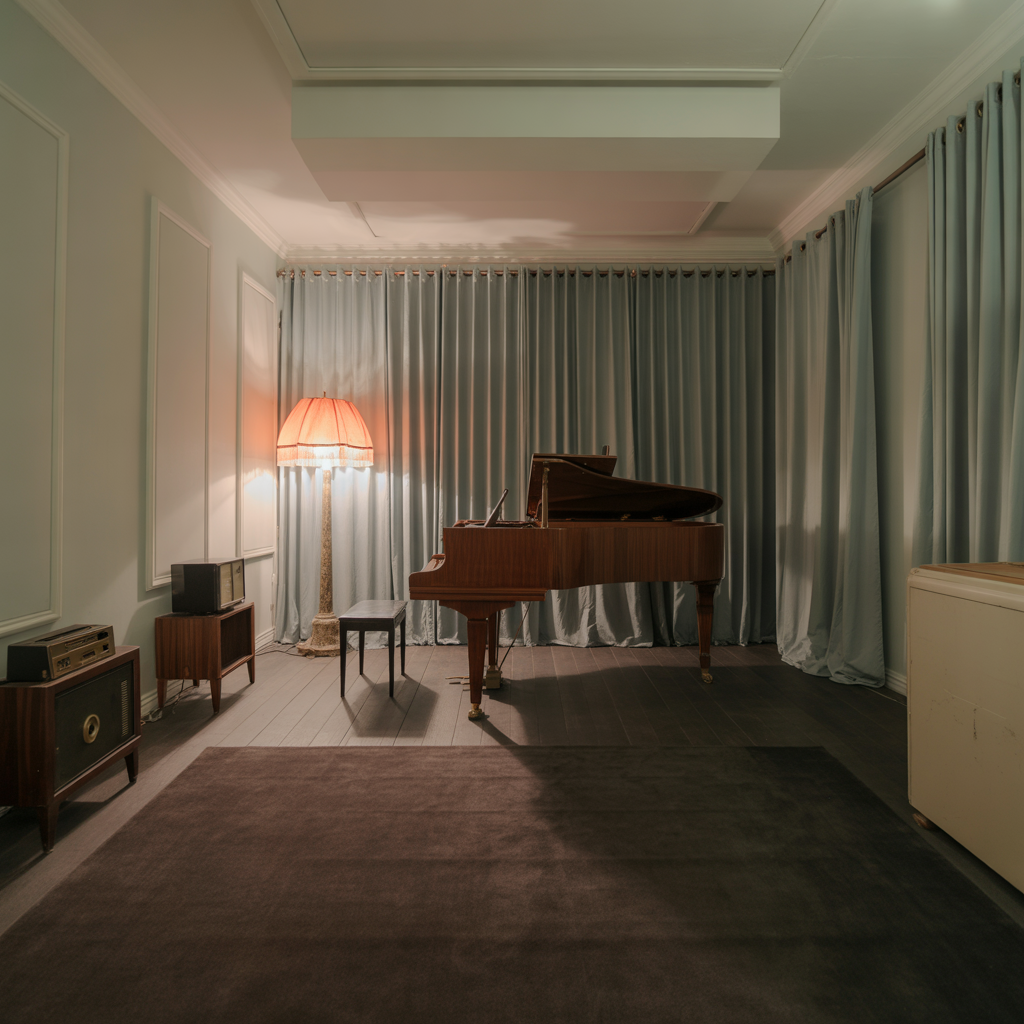
A thick rug does more than tie a room together; it absorbs sound and prevents unwanted echoes. Persian rugs or shaggy area rugs can both contribute warmth and style, while also keeping noise levels under control. They act as natural acoustic treatment without sacrificing comfort.
For hardwood floors, rugs are almost essential. They keep the space grounded visually and literally, giving you a defined area to set up instruments or a listening nook. The result is a room that feels cozy and sounds better.
Curtains as Dual Purpose
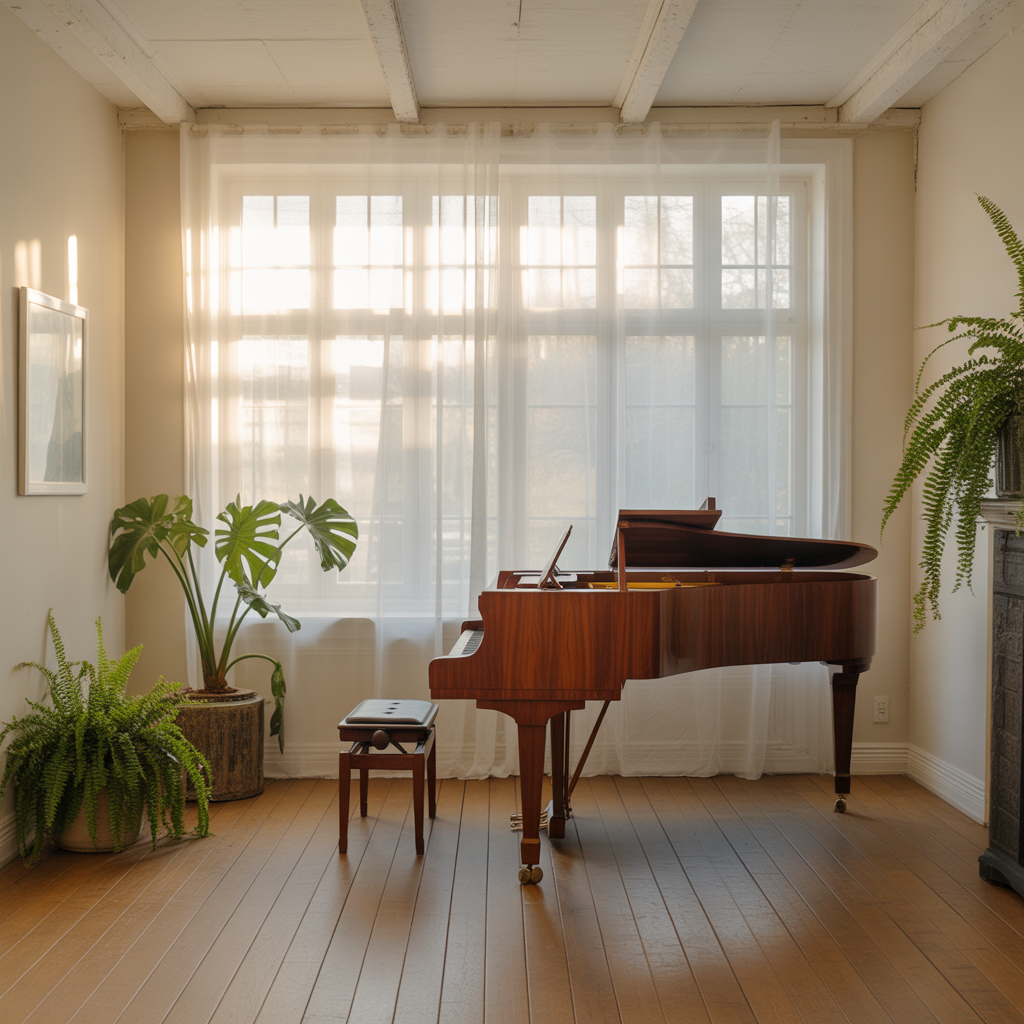
Heavy curtains can instantly make a room feel more intimate. They block out unwanted noise from the outside world while also softening the acoustics indoors. Rich fabrics like velvet or linen add a luxurious touch that enhances coziness.
Beyond functionality, curtains also allow flexibility in design. A patterned fabric can inject personality, while neutral tones keep the room calm. Either way, they’re a subtle yet powerful element in cozy music room design.
Mixing Analog and Digital
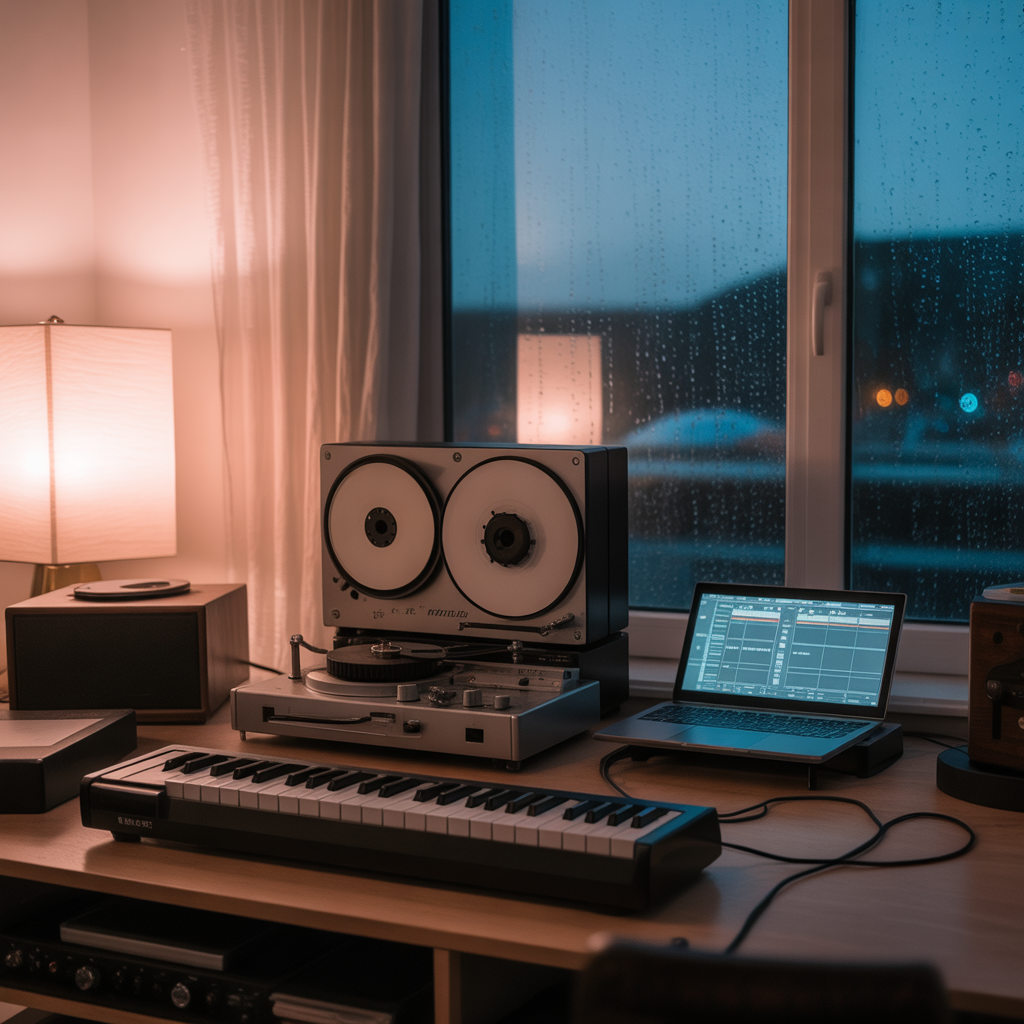
Some of the most inspiring music rooms combine vintage analog elements with modern tech. Think record players and vinyl collections paired with sleek digital sound systems. This blend allows you to enjoy the tactile charm of old-school listening alongside the convenience of digital tools.
For musicians, mixing analog instruments with digital recording gear can open new creative pathways. An acoustic guitar next to a MIDI controller, or a grand piano alongside a laptop, creates a balanced environment where tradition and innovation meet.
Indoor Plants for Freshness

Plants breathe life into a music room. Their greenery adds visual softness while also improving air quality. Tall floor plants like fiddle-leaf figs or smaller options like pothos bring a calming energy that pairs beautifully with musical creativity.
Certain plants even help with acoustics by absorbing sound. Adding them strategically around the room not only boosts coziness but also subtly enhances the listening and practice experience.
Music-Themed Artwork

Walls can tell a story through artwork. Posters of legendary musicians, framed sheet music, or abstract art inspired by sound waves add character to your space. These pieces remind you of your passion and create a visual connection to the music you play or love.
You don’t need to stick to traditional frames—tapestries, wall decals, or even your own painted lyrics can serve as meaningful décor. The point is to surround yourself with inspiration that resonates with your musical identity.
Minimalist Style
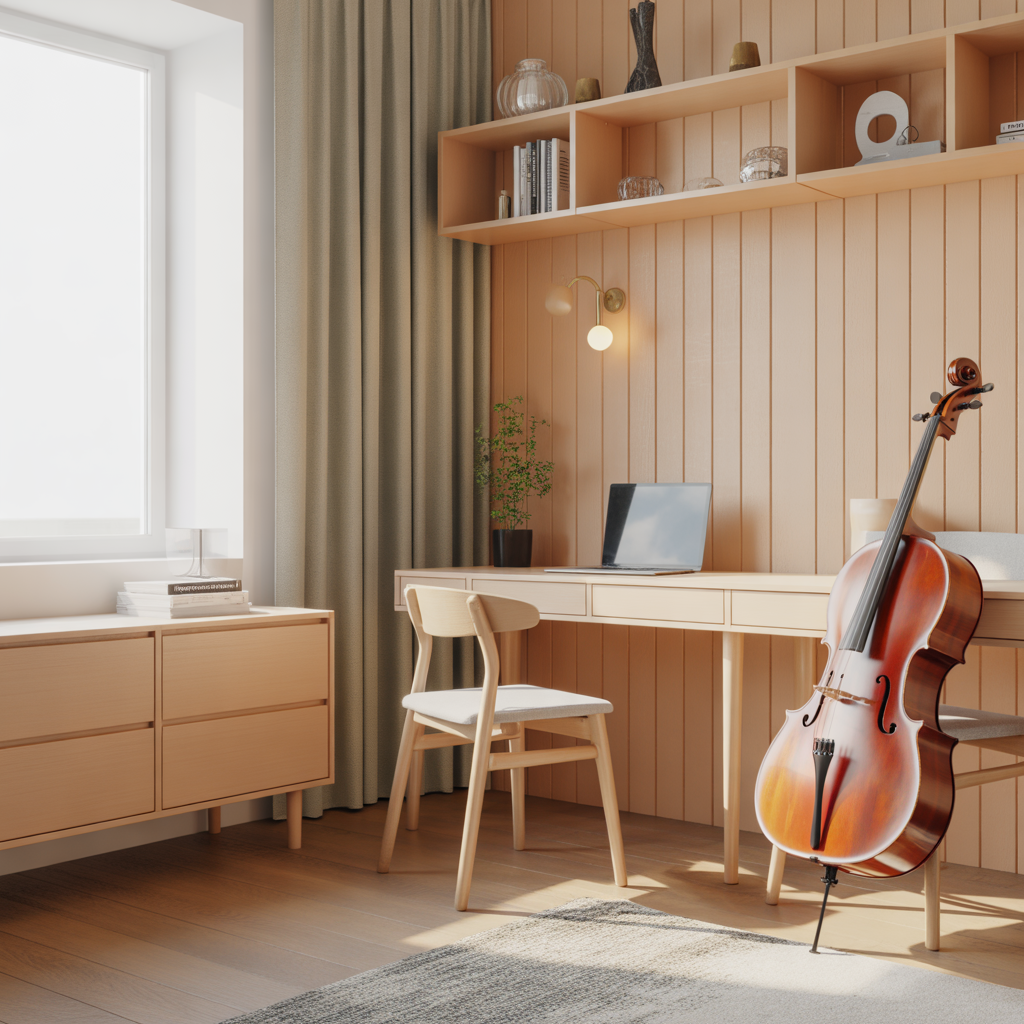
Sometimes less truly is more. A minimalist cozy music room focuses on clean lines, open spaces, and carefully chosen pieces. Instead of cluttering the room, it highlights only the essentials: a favorite instrument, a comfortable chair, and warm lighting.
This style works especially well for small spaces. By keeping the design simple, the focus stays on the music rather than distractions. Minimalism can also be calming, allowing your creativity to flow without visual noise.
Rustic Design
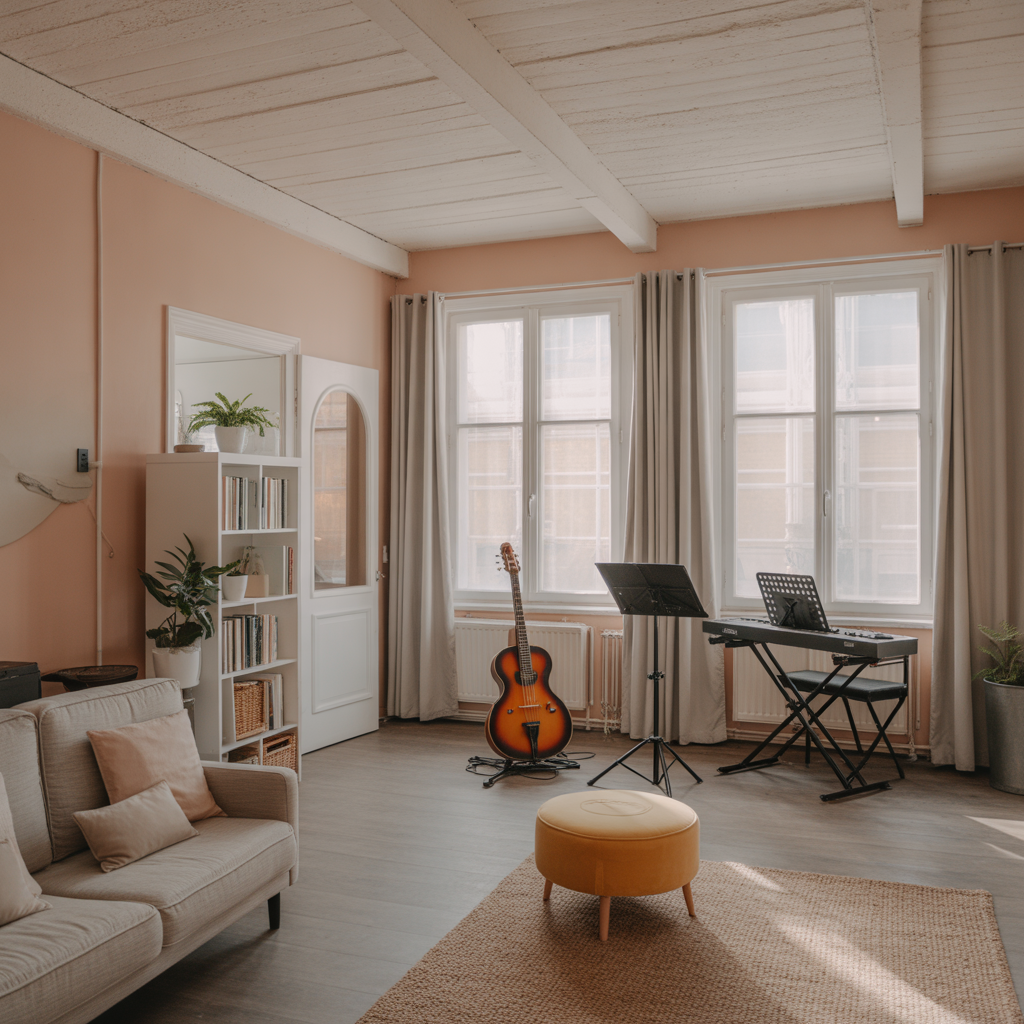
Rustic charm brings warmth to a music room. Wooden beams, exposed brick, and earthy tones create a space that feels grounded and authentic. Add in vintage instruments or a worn leather chair, and suddenly your music room feels timeless.
Rustic design isn’t about perfection. A slightly weathered rug, handmade shelves, or antique record cabinets add personality. The imperfections tell stories, much like music does.
Bohemian Vibes
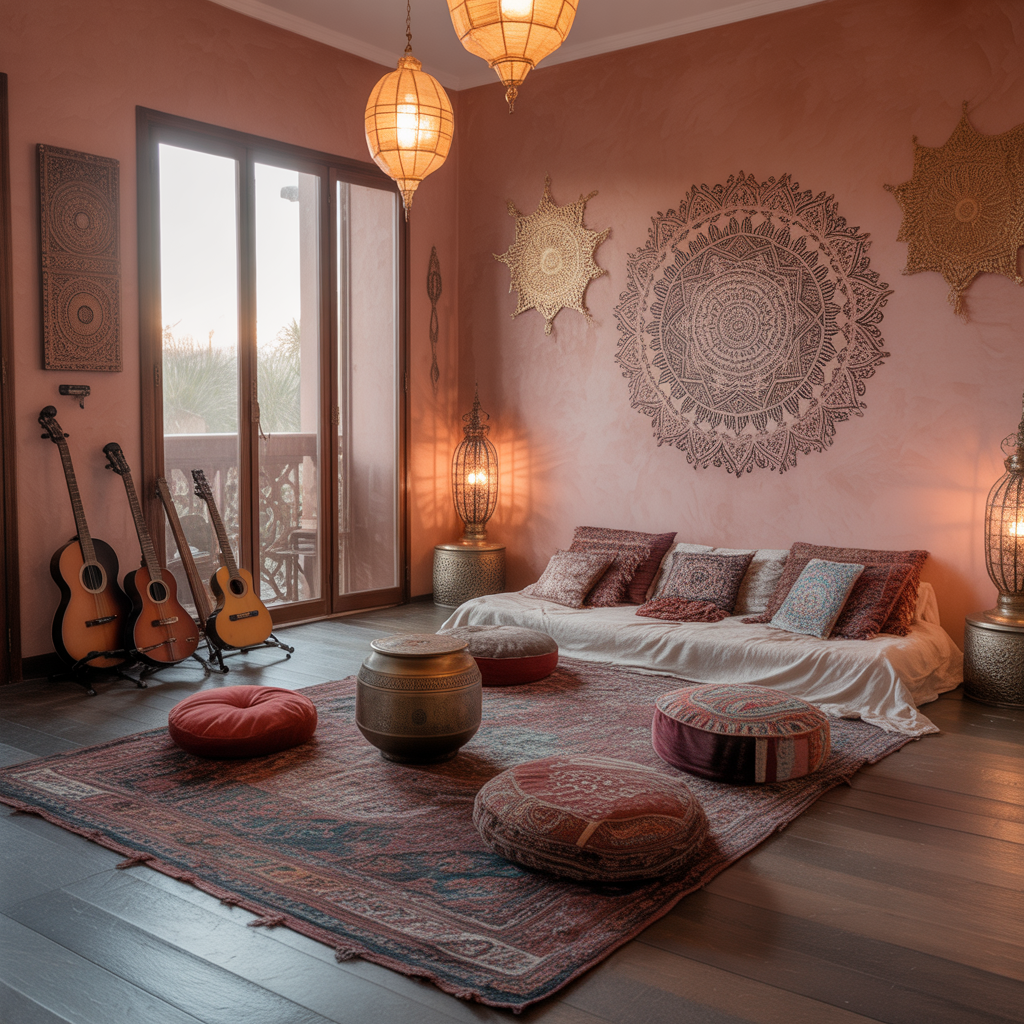
For a more eclectic and colorful feel, bohemian design works beautifully. Think layered rugs, vibrant cushions, macramé wall hangings, and string lights. This approach embraces variety, making your music room feel like a creative sanctuary.
Bohemian style also allows you to mix cultures and eras, whether it’s an African djembe drum beside a modern keyboard or Indian textiles paired with vintage vinyl. The eclectic nature reflects the diversity of music itself.
Smart Technology Integration
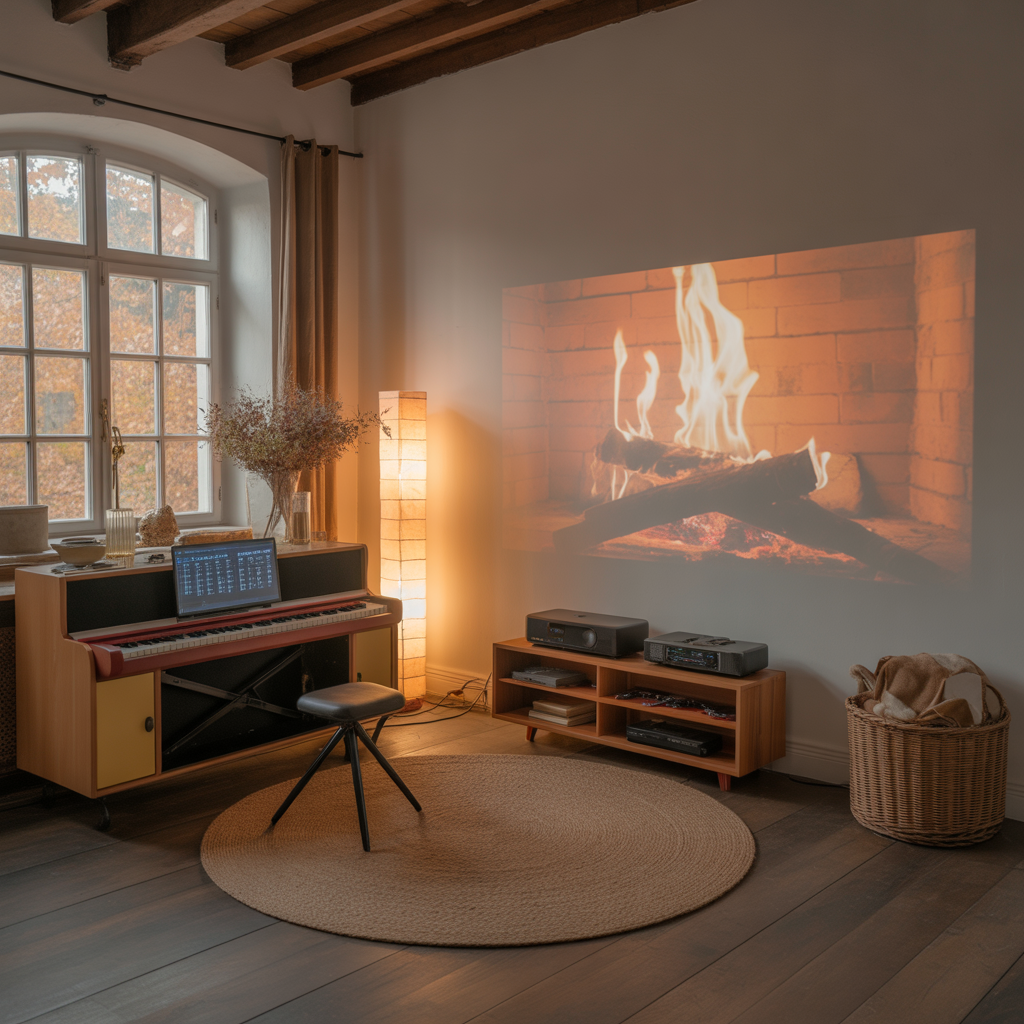
Modern cozy music rooms can benefit from smart technology. Voice-activated speakers, adjustable lighting systems, and smart thermostats make the environment adaptable to your mood. One command and your room is ready for practice or relaxation.
Smart tech also helps streamline music creation. Cloud-connected recording devices or wireless instrument interfaces reduce clutter and give you freedom to focus on your craft.
Multi-Purpose Functionality
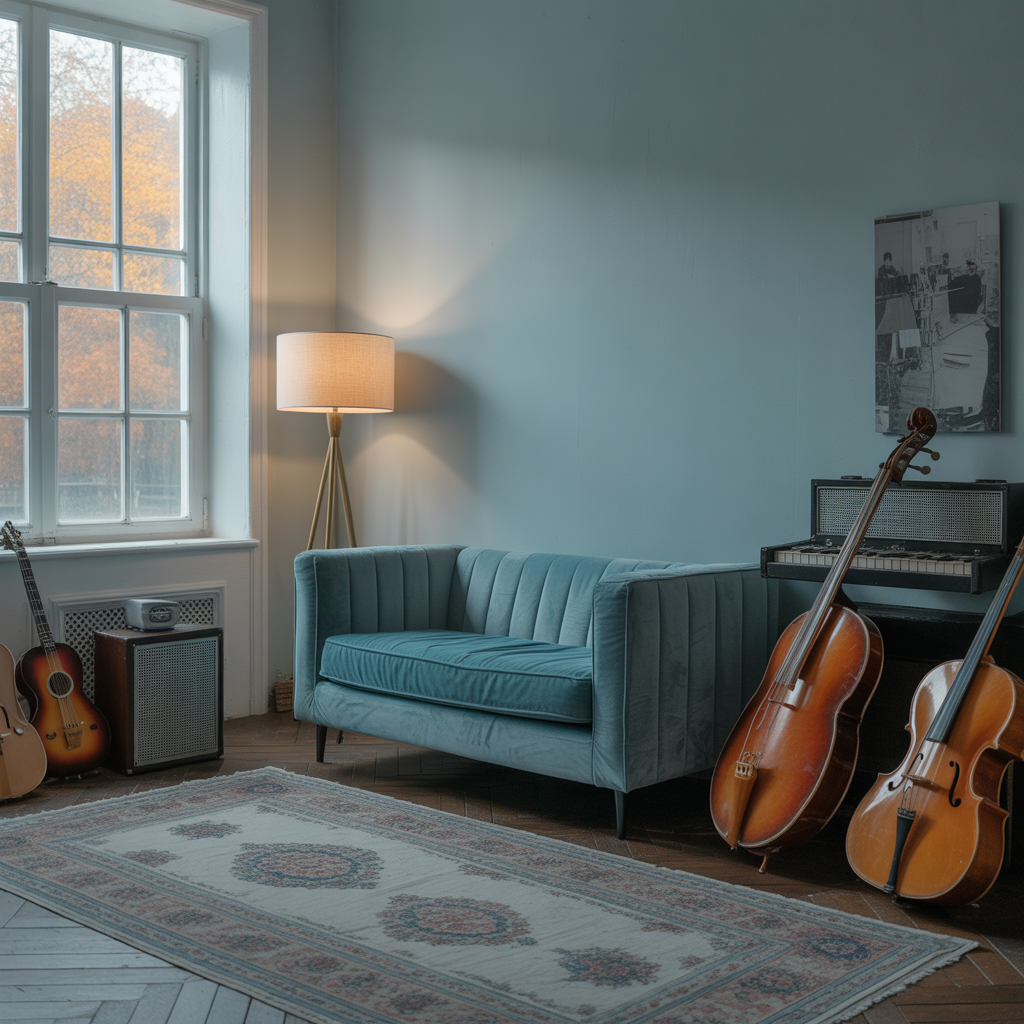
Not everyone has the luxury of a dedicated music room. A cozy music corner can share space with a home office, living room, or reading nook. The trick is to create zones with rugs, shelves, or dividers that keep music central without overwhelming the space.
Multi-purpose setups also make music more integrated into daily life. Having a guitar within arm’s reach while working or a record player near your reading chair makes music part of your everyday rhythm.
Vintage Touches
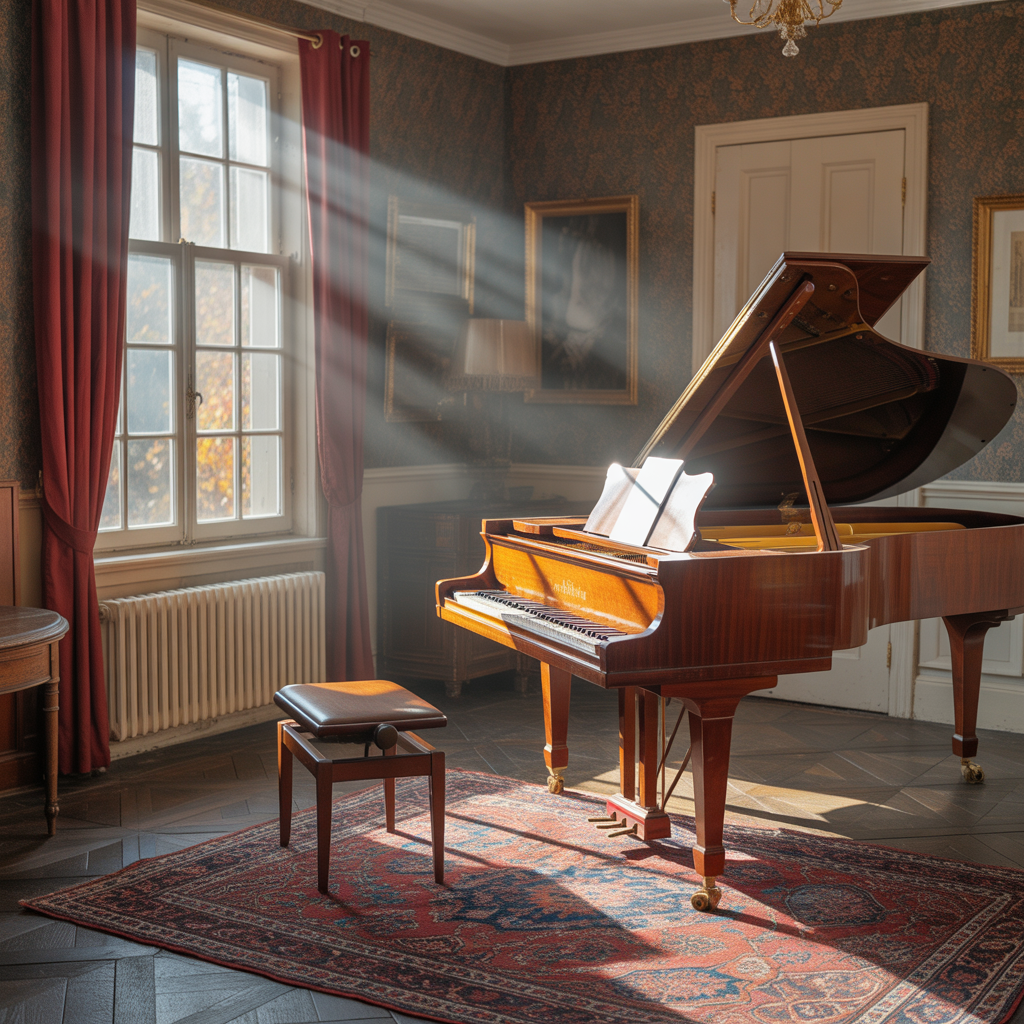
Vintage items bring soul to a music room. A retro record player, old concert posters, or antique sheet music stands can instantly add charm. These touches ground the space in history while adding authenticity.
Pairing vintage items with modern comforts keeps the room from feeling outdated. A vintage lamp alongside a modern couch, for example, balances nostalgia with coziness.
Personal Memorabilia
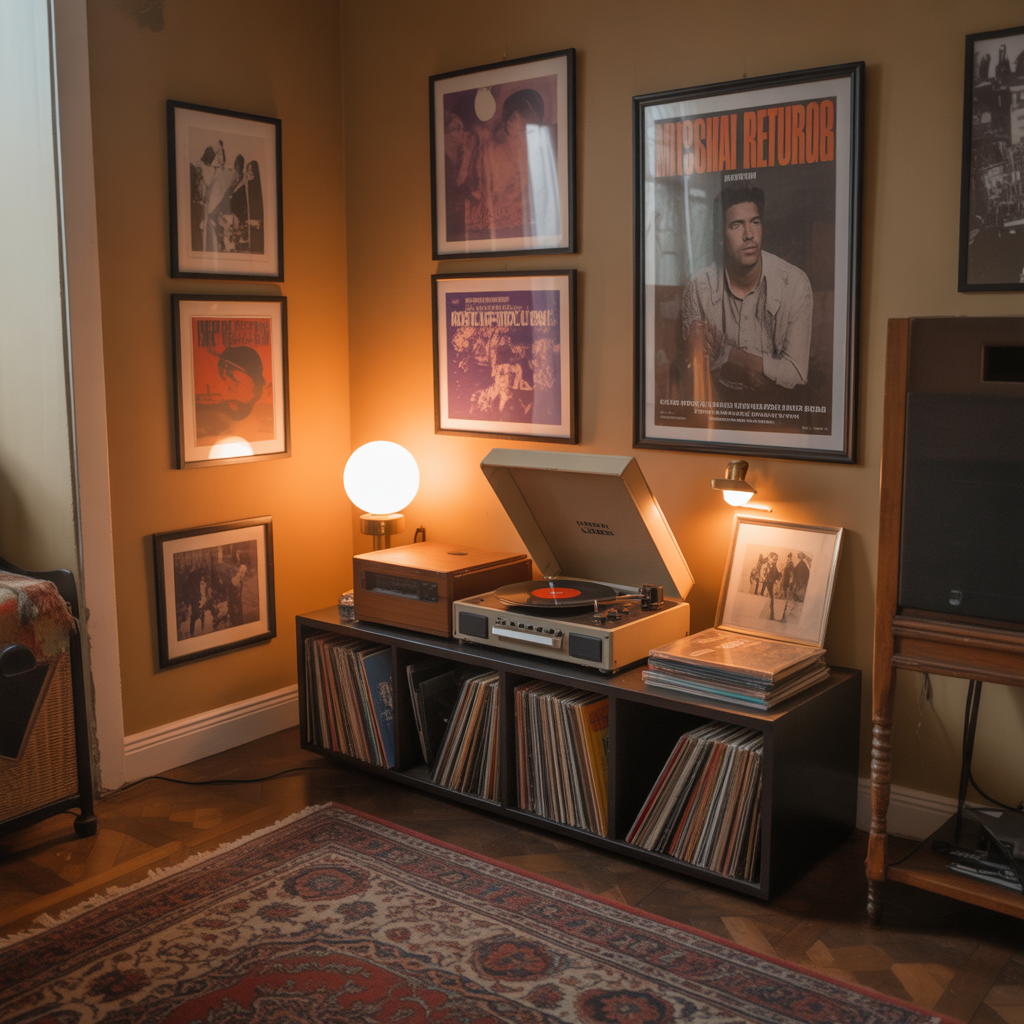
The most meaningful music rooms are infused with personal history. Framed ticket stubs, photos from performances, or handwritten lyrics can make the space truly yours. These items remind you why music matters in your life.
Personal memorabilia also serves as conversation starters when friends visit. Sharing stories tied to objects makes the room not just cozy, but deeply personal.
Compact Music Corners
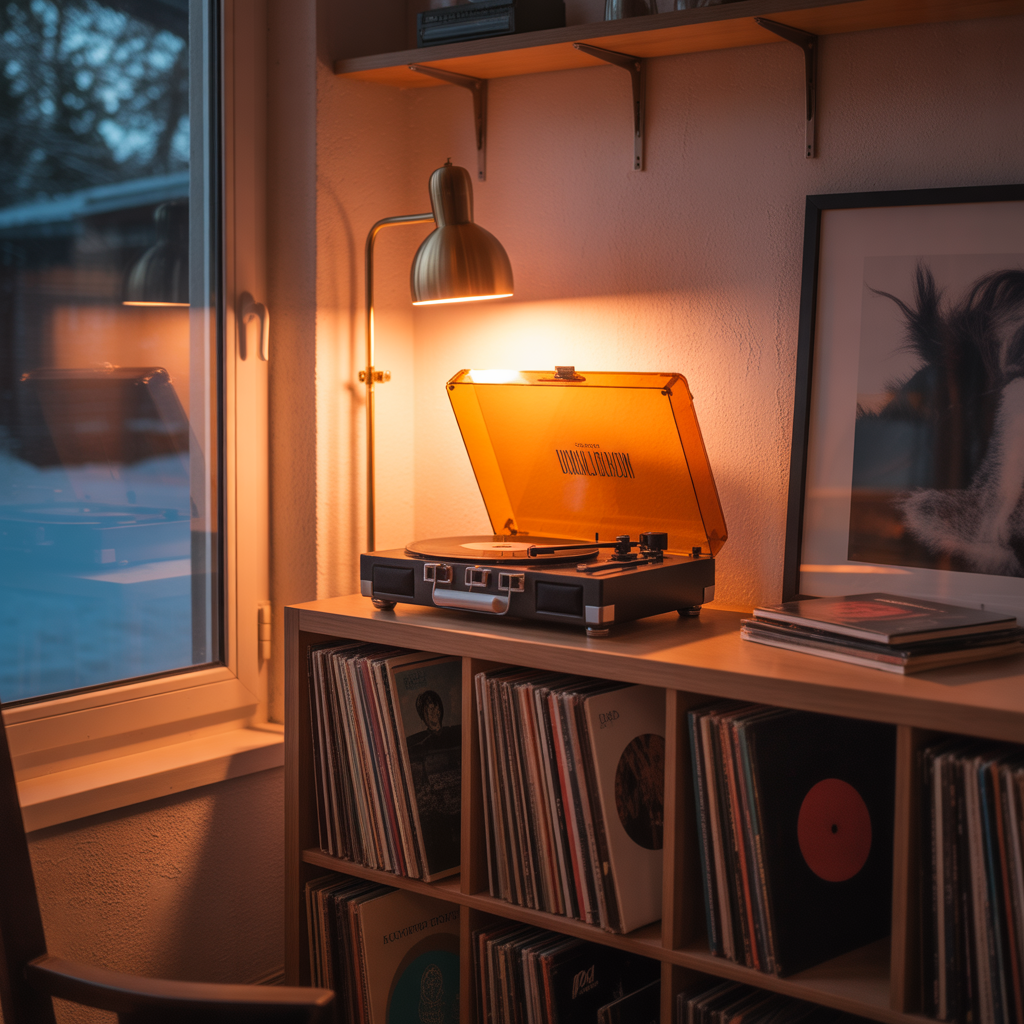
Even in a studio apartment, you can carve out a cozy music nook. A simple chair, a small shelf for sheet music, and warm lighting can create a dedicated space. It doesn’t need to be large to feel meaningful.
Compact corners are proof that coziness comes from intention, not size. As long as the space reflects your love for music, it will feel like a retreat.
DIY Soundproofing
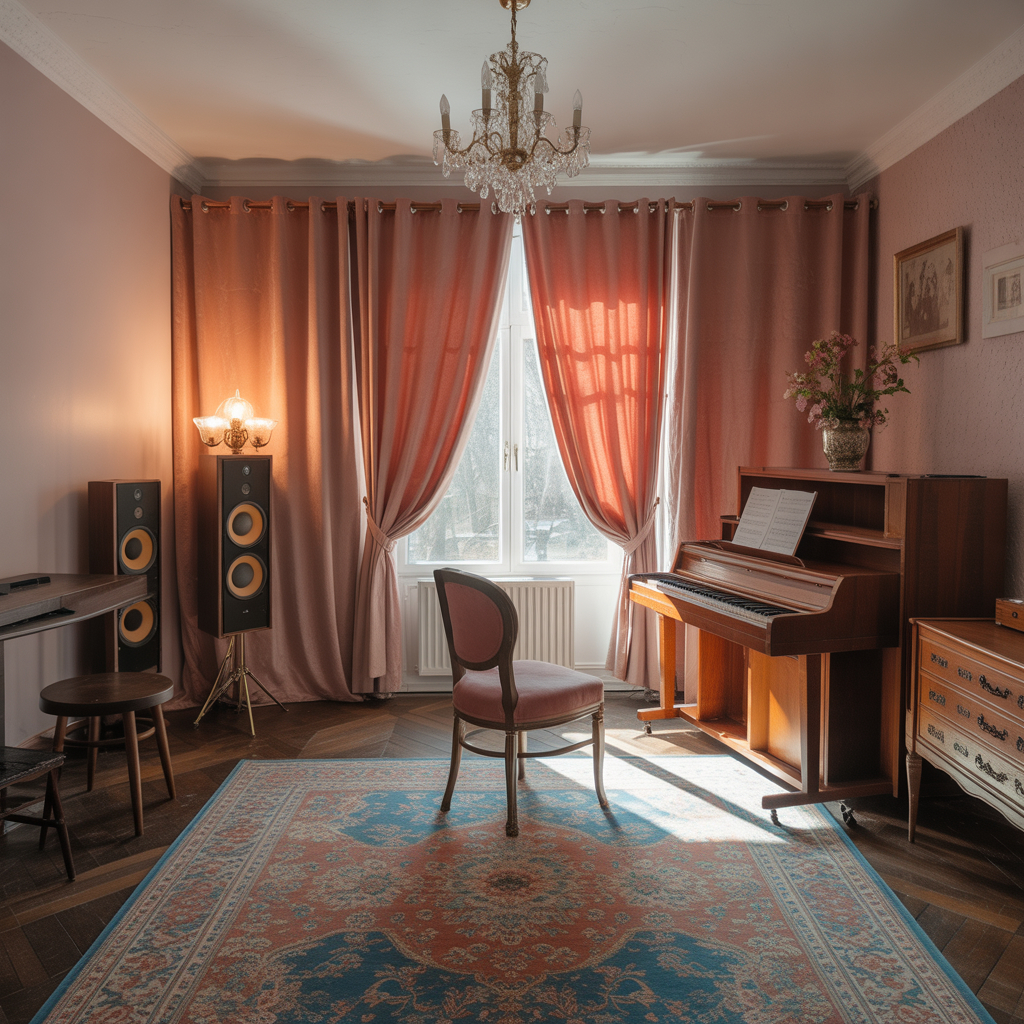
Professional soundproofing can be pricey, but there are DIY solutions that also add coziness. Thick curtains, bookshelves filled with books, and layered rugs all help absorb sound.
You can even make your own acoustic panels with fabric and insulation. Beyond functionality, these DIY elements add texture and personality to the room.
Visit Also: Boho Garden Gate
Record Collections
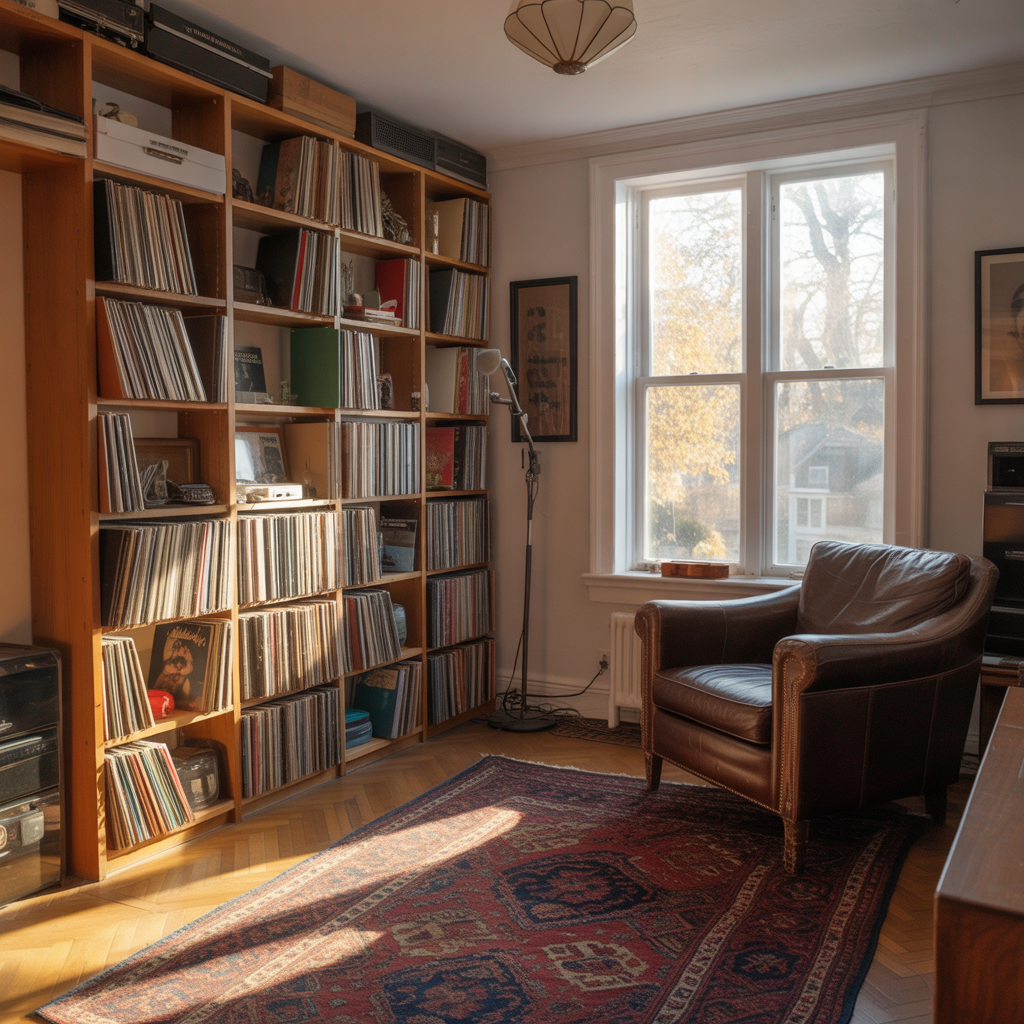
A vinyl collection instantly adds warmth and personality to a room. Stacks of records displayed on shelves or in crates give a tactile, nostalgic touch. Flipping through records is as much a ritual as listening to them.
For a cozy feel, integrate your collection into the design. Place a turntable on a wooden console, add soft lighting, and create a comfortable listening chair nearby. Suddenly, your music room becomes a sanctuary for analog sound.
Layered Textiles
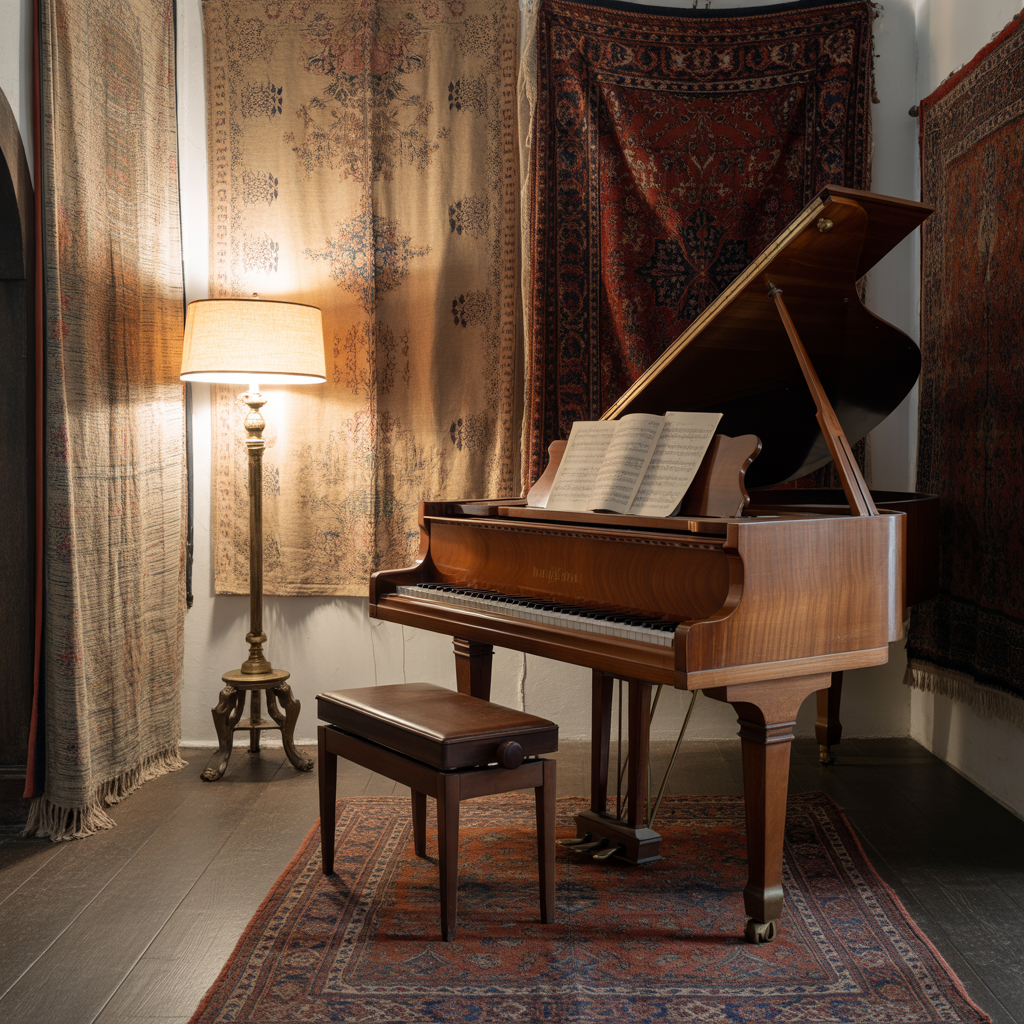
Cozy design often comes down to texture. Layering textiles—blankets on chairs, cushions on benches, or woven wall hangings—adds softness that invites relaxation. Textiles also subtly affect acoustics, helping to tame echoes.
Patterns and colors can be chosen to reflect your personality. Bold prints add energy, while muted tones create calm. Either way, textiles make the space more inviting.
Dedicated Practice Area
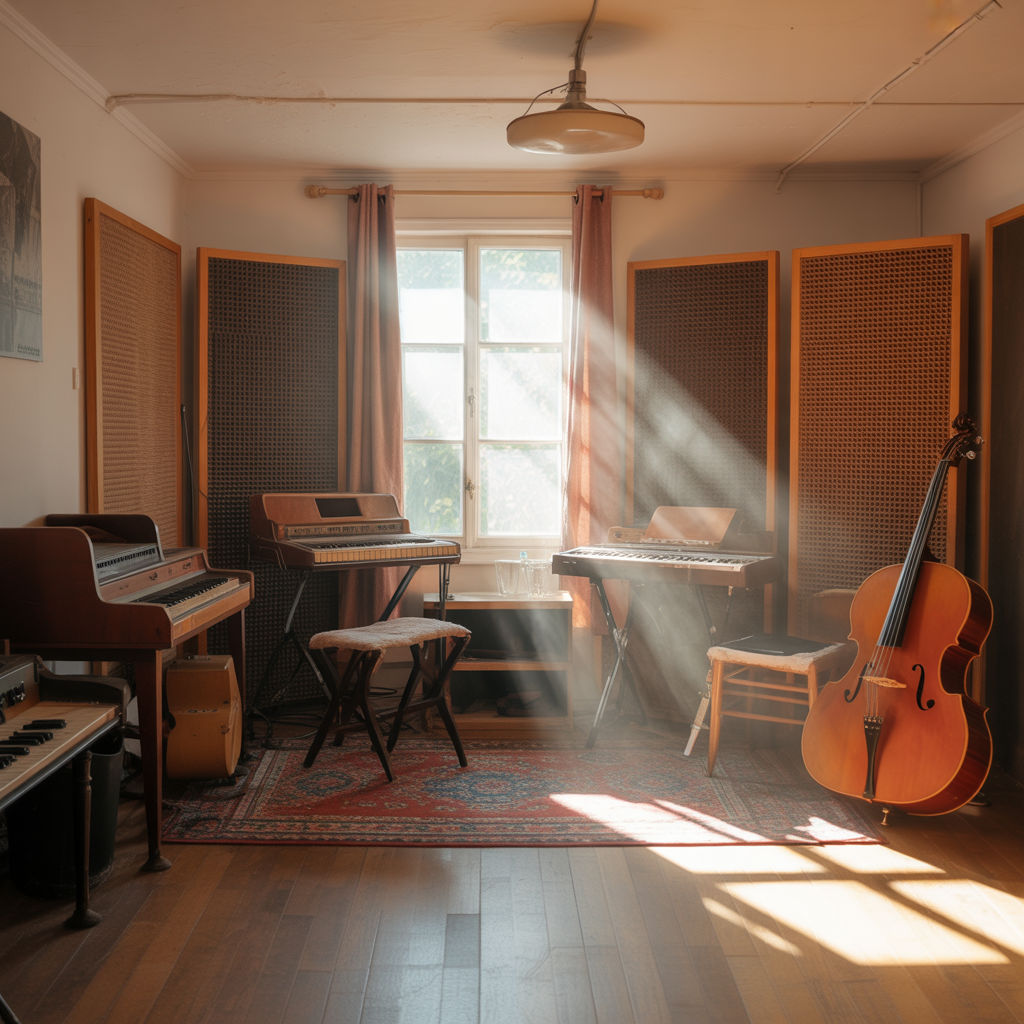
If you’re a musician, setting aside a focused practice zone can make all the difference. A music stand, proper chair, and good lighting create a setup that supports consistency.
Separating a practice area from the relaxation nook helps balance discipline and comfort. When you step into that corner, you know it’s time to focus, yet the surrounding coziness keeps you inspired.
Reading and Listening Nook
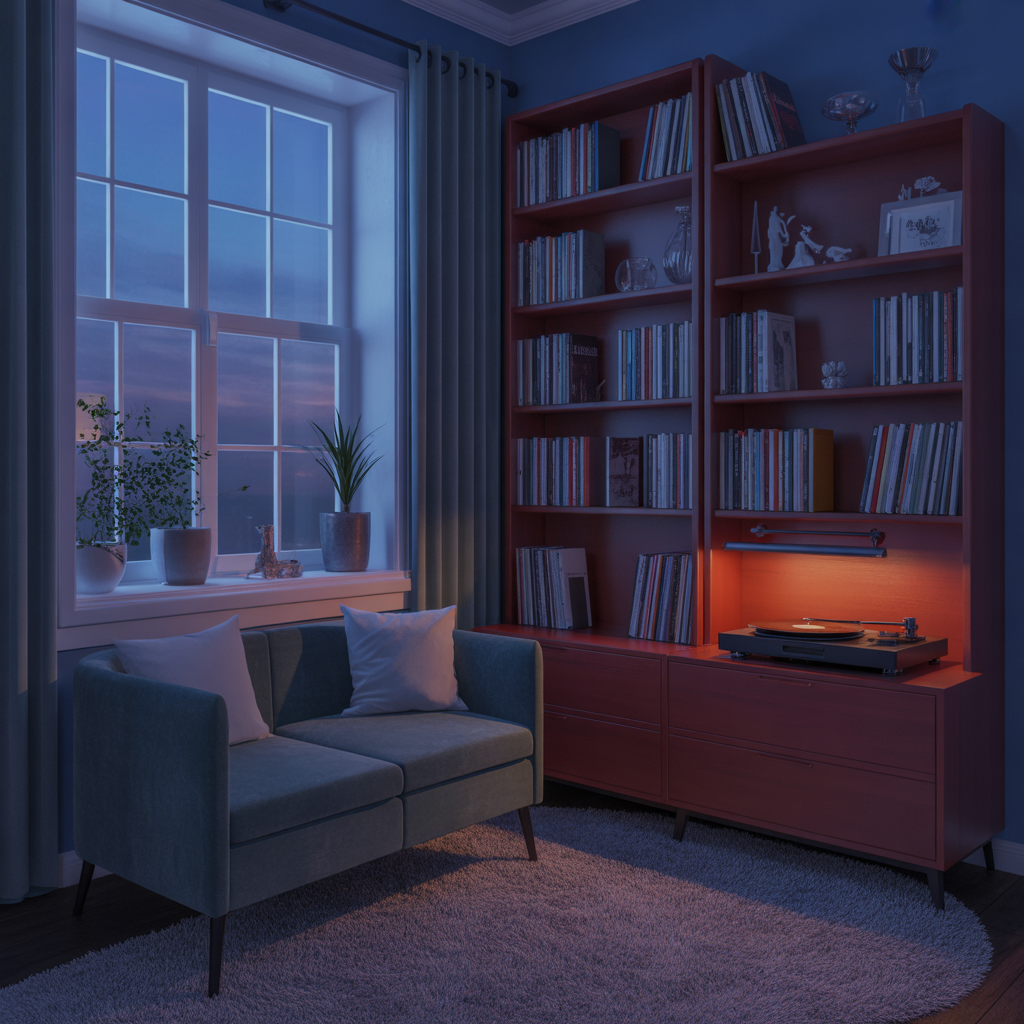
A cozy music room doesn’t have to be only about playing. A reading and listening nook can become a retreat for enjoying biographies of musicians, studying theory books, or simply sinking into music with headphones.
A small bookshelf, a plush chair, and soft light can turn a corner into a haven for inspiration. It’s the perfect complement to the creative energy of the rest of the room.
FAQs about Cozy Music Rooms
How can I create a cozy music room on a budget?
You can repurpose existing furniture, add thrifted rugs and curtains, and use DIY acoustic solutions like bookshelves or homemade panels. Small touches like warm lighting and plants go a long way.
Do I need professional soundproofing for a home music room?
Not always. For casual practice or listening, layered textiles, rugs, and heavy curtains usually suffice. Professional soundproofing is more important for recording studios or loud instruments like drums.
What instruments work best in a cozy music room?
It depends on your passion. Acoustic guitars, keyboards, or pianos are common, but any instrument can fit. The key is creating a layout that supports the instrument both visually and acoustically.
How do I make a small room feel cozy but not cluttered?
Stick to essential furniture, use vertical storage, and embrace a minimalist design style. Defining zones with rugs or shelves helps keep the room organized.
Can a cozy music room also be a home office?
Yes. Many people design multi-purpose rooms that blend music and work. With proper zoning and storage, you can keep the space functional without sacrificing coziness.
Conclusion
A cozy music room is more than just a decorated space—it’s a personal sanctuary where creativity and comfort meet. Whether you lean toward rustic warmth, minimalist clarity, or bohemian vibrancy, the key lies in creating an environment that reflects your personality and musical journey. Thoughtful touches like warm lighting, plants, rugs, and personal memorabilia transform ordinary corners into extraordinary retreats.
By combining function with atmosphere, your cozy music room can inspire daily practice, offer a peaceful escape, and become a space you’ll cherish for years. Music thrives where comfort and inspiration come together, and with these ideas, you’ll have everything you need to create your own harmonious haven.

